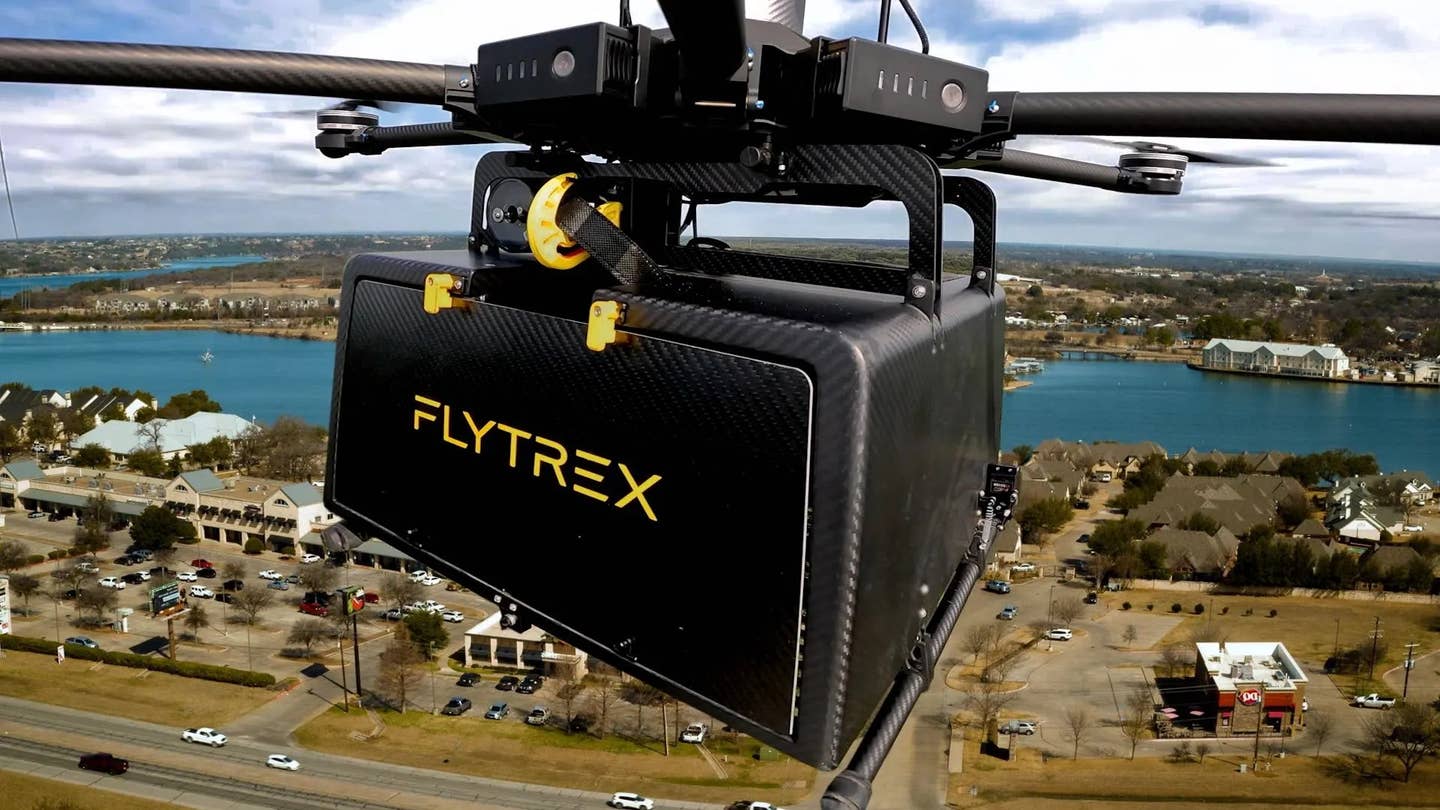First U.S. Moonshot in Decades Will Fall Short—What It Means
This week’s moon mission won’t be the last in 2024 for NASA…or Astrobotic, the company behind Monday’s launch.

United Launch Alliance’s Vulcan Centaur V rocket, carrying Astrobotic’s Peregrine lander, takes off from Cape Canaveral Space Force Station in Florida on Monday morning. [Courtesy: Astrobotic]
The first American spacecraft to attempt a moon landing since Apollo 17 half a century ago will not reach the lunar surface, according to the company that built it.
Peregrine Mission One, an expedition to the moon as part of NASA’s Commercial Lunar Payload Services (CLPS) initiative, lifted off Monday morning and appeared to be progressing as planned. But a few hours into the spaceflight, Pittsburgh-based Astrobotic, whose Peregrine lander was destined for the lunar surface, released a series of updates on X (formerly Twitter) that cast doubt on the mission’s aims.
Peregrine—which is carrying a total of 20 payloads, five of them from NASA—was expected to attempt a lunar landing on February 23, but that will no longer be the case. The lander would have become the first built by a private company to land on the moon.
Peregrine lifted off Monday morning at 2:18 a.m. EST from Cape Canaveral Space Force Station in Florida aboard the Vulcan Centaur V, a heavy-lift launch vehicle built by United Launch Alliance and a 50-50 joint venture between Boeing and Lockheed Martin.
After climbing to about 310 miles, the lander successfully separated from the rocket and powered on. Astrobotic made contact and began receiving telemetry from Peregrine, which is now flying solo toward the moon. In other words, all appeared to be in order.
But in the following hours, Astrobotic issued a string of updates, each more deflating than the last.
The company’s engineers discovered an issue with Peregrine’s propulsion system that is causing a “critical loss of propellant,” which affects the spacecraft’s ability to orient its solar panels toward the sun. Interestingly, the system is not considered novel.
“The Peregrine lander's propulsion system uses a hypergolic propellant mixture, combining hydrazine fuel and a solution of nitric oxide and nitrogen tetroxide as the oxidizer,” wrote Stephen Clark of the website Ars Technica. “This is a tried-and-true architecture because hydrazine and nitrogen tetroxide immediately combust upon contact with one another, meaning the propulsion system doesn't need an ignition source.”
On Monday afternoon, the firm posted the first image from Peregrine in space on X, depicting the warped Multi-Layer Insulation (MLI) meant to protect it. Astrobotic called this the “first visual clue” confirming its hunch that the propulsion system is the root of the problem. It later hypothesized that a valve between the spacecraft’s helium pressurant and oxidizer failed to reseal after actuation, though this was not because of the launch.
According to Astrobotic, the propellant leak is causing Peregrine’s altitude control system (ACS) thrusters to burn “well beyond their expected service life cycles” in order to stop the lander from tumbling into space. An update posted Tuesday afternoon announced the final blow.
“Given the propellant leak, there is, unfortunately, no chance of a soft landing on the moon,” Astrobotic said.
However, the mission was not a complete bust. As of Thursday morning, Peregrine continues to fly toward lunar orbit, and the company said all of the ship’s payloads are communicating or powering up as intended. It also confirmed that a crescent shape in a photo the lander snapped on Tuesday is, indeed, Earth.
Peregrine is carrying scientific payloads from NASA and other space agencies, universities, companies, and individuals. The cargo comes from seven nations, including the first lunar or lunar surface payloads from the Mexican, German, English, and Hungarian space agencies.
The mission was intended to search for water, measure radiation and lunar surface conditions, and prepare NASA for Artemis, a series of launches that will attempt to return American astronauts to the moon as soon as 2025.
But although they shot for the moon and missed, Astrobotic and NASA still have the opportunity to land among the stars, so to speak.
Shooting for the Moon
Outside observers, aware of Peregrine Mission One’s aim to reach the lunar surface, may consider the mission’s result a failure. But that certainly isn’t the view of Astrobotic.
“Obviously, if we don't achieve that final goal—the soft landing and all of our payloads being activated—there'll be huge disappointment across the team and our partners and suppliers, who worked tirelessly and tremendously to get to this point,” Andrew Jones, director of landers and spacecraft for Astrobotic, told FLYING before Peregrine took flight. “But we've learned so much up to here, and I think we've played a huge part in paving the way for our ambitions of making space accessible.”
Landing on the moon is an essential piece of Astrobotic’s mission. The company envisions a democratized space, one where private firms and individuals could easily—and cheaply—move people and goods to the lunar surface and back using Peregrine and its variants. Manifesting that will require proof of concept in the form of a moon landing.
Jones and his team began developing the lander in 2019, using a combination of built-in-house components and parts manufactured by hundreds of suppliers across the U.S. The project was bolstered by $108 million in funding from NASA, which awarded Peregrine the first CLPS contract to put a lander on the moon as a service.
Jones told FLYING Astrobotic conducted “thousands of hours” of analysis on the lander and its mission profile prior to Monday’s launch. These included hundreds of tests of its components, materials, avionics, propulsion, communications, power system, and other features. A full-size structural test model and thousands of lines of code helped prepare the team for potential failure scenarios.
Despite this, the mission did not quite go as planned. Astrobotic is one of 14 vendors eligible to carry NASA payloads to the moon through the CLPS, and it had hoped to be the first to do so.
“To be the first commercial company to land on the moon, it shows that anything’s possible,” Jones told FLYING. “Up until now, it’s always been the purview of governments and large entities to do this. To be able to say that a commercial company like us—that’s not huge, that’s not got millions in the bank—that we can actually do it says a lot for the industry.”
But while Peregrine stopped short of its goal, Jones balked at calling that outcome a failure.
“No matter the outcome of this mission, it's important that we continue to strive for regular, routine access to the lunar surface,” he said. “There's always going to be roadblocks. There's always going to be hiccups along the way. But I think every mission that we do, every lesson that we learn, makes the objective closer and easier to achieve.”
Fortunately for Jones, Astrobotic will have another shot at that objective later this year. The company was also picked by NASA to launch the space agency’s 1-ton VIPER (Volatiles Investigating Polar Exploration Rover) to the lunar south pole aboard its Griffin lander. The mission, which will search for water, will cost NASA an estimated $500 million—far more than it invested in the Peregrine mission.
Beyond that, Astrobotic will send a lander tethered to a lunar rover to the moon as early as 2026 to demonstrate LunaGrid-Lite, a proprietary power transmission system. The mission is part of a $35 million NASA tipping point partnership. It will also provide a cargo accommodation system to the Blue Origin National Team, which is developing a lunar lander for humans and large cargo to be used on the Artemis missions.
“I think we'll have to [establish a presence on the moon], partly because of what we want to do beyond the moon…I think there's going to be a larger presence on the moon from a scientific [standpoint], as well as just commercial people wanting to experience and live there,” Jones said.
‘Shots on Goal’
NASA researchers were well aware of the risks going into Monday’s launch, the first in its manifest of CLPS missions. CLPS aims to establish a commercial marketplace for science, exploration, and “technology development investigations” on the moon’s surface and in lunar orbit, as well as to expand the lunar economy to support crewed Artemis moon missions.
The CLPS marked a shift in emphasis for the space agency, looping private companies into an industry historically dominated by government agencies and programs. Thomas Zurbuchen, a former associate administrator for NASA’s Science Mission Directorate and key architect of the program, characterized the CLPS strategy as “taking shots on goal.”
But as the saying goes, you miss 100 percent of the shots you don’t take. Zurbuchen and NASA Administrator Bill Nelson were among those who applauded Peregrine Mission One, despite it not quite reaching its goal.
Joel Kearns, deputy associate administrator for exploration for the Science Mission Directorate, added: “Each success and setback are opportunities to learn and grow. We will use this lesson to propel our efforts to advance science, exploration, and commercial development of the moon.”
To Kearns’ point, the success rate for lunar landings is estimated to be at or below 50 percent, and Astrobotic’s attempt was America’s first in half a century. India in 2019 smashed its Vikram rover into the lunar surface before successfully landing the spacecraft in August, while Russia had a failed moonshot—its first in 47 years—that same month.
NASA researchers had hoped Peregrine’s findings would help them understand how solar radiation affects the lunar surface, as well as provide data to its Lunar-VISE (Lunar Vulkan Imaging and Spectroscopy Explorer), which is expected to arrive at Peregrine’s planned lunar landing site in 2026. Those goals will go unmet, but the agency has plenty more opportunities to learn.
Astrobotic isn’t the only private U.S. company shooting for the moon. In fact, Monday’s launch kicked off one of six planned CLPS missions to the moon in 2024.
Three of the remaining five journeys will use the Nova-C private lander from Houston-based Intuitive Machines, which could achieve the first commercial soft landing in March should Astrobotic fall short. A fourth will be flown by another Texas-based startup, Firefly Aerospace. Rounding out the manifest is Astrobotic’s VIPER mission. Two additional CLPS missions are scheduled for 2025 and 2026.
NASA officials have tempered expectations for the first batch of landers, given that no private firm has soft landed on the moon. But if delays—which plagued Monday’s launch and others—and unmet expectations become the norm, the future of the Artemis program could be murky.
Like this story? We think you'll also like the Future of FLYING newsletter sent every Thursday afternoon. Sign up now.

Subscribe to Our Newsletter
Get the latest FLYING stories delivered directly to your inbox






